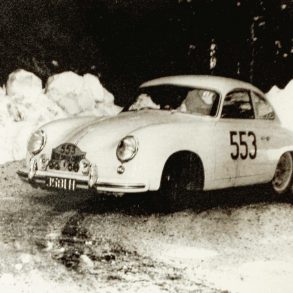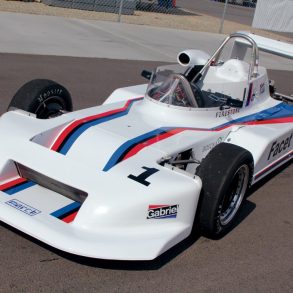
In those difficult economic times, automobile constructors had had the idea time and again to build an inexpensive car for the population at large. One of them was Ferdinand Porsche who, in the course of his career, had constructed no less than seven compact and small cars for various manufacturers. As the ultimate result of these projects in terms of technology and design he finally developed the Volkswagen concept in 1933, presenting the car to the Reich Ministry of Transport on January 17, 1934 in his “Study for the Production of a Germany People’s Car” (quite simply, the “Volkswagen”).
At the end of the day the political leaders back then were also convinced of the concept Porsche and his constructors had developed. So five months after submitting the study, Dr. Ing. h.c. F. Porsche GmbH received the order to develop the car at the initiative of the Reich Government. And while the original agreement was to build only one prototype of the Volkswagen, the RDA increased the order on 7 December 1934 to three cars assembled in the garage of Ferdinand Porsche’s private residence.

After construction of three further Volkswagen prototypes code-named V3 had started in February 1936, resistance to the project began to build up in the RDA. Quite simply because, with its central tube frame, the torsion bar suspension invented by Porsche and the air-cooled four-cylinder boxer engine at the rear, the Volkswagen was now seen – and feared – as a serious competitor to existing models. A further series of 30 prototypes (VW30) was nevertheless built in 1937 by the then Daimler-Benz AG and tested in a large-scale trial covering a total of 2.4 million test kilometres.
Contrary to the first idea to build the Volkswagen in a joint venture of German car makers, the Reich Government decided on July 4, 1936 to build a separate plant for the new car, the Volkswagenwerk. So the “Gesellschaft zur Vorbereitung des Deutschen Volkswagens mbH” or “Gezuvor” for short (the “Company for Preparation of Deutsche Volkswagen Ltd”) was established on May 28, 1937.
As one of the three managing directors of Gezuvor, Ferdinand Porsche received the official order for the technical development and planning of the future production plant, with construction work starting in May 1938 in the small town of Fallersleben, now Wolfsburg.
On two study trips to the USA, Ferdinand Porsche gained the latest know-how on modern automobile production and the rules to be observed in the production process.
By the second half of 1938 the prototypes, now having reached the level of VW38, had achieved a point in the 
Priced at an extremely low 990.- reichsmarks, the Volkswagen was really to be everybody’s car, easily affordable for the average purchaser. But due to the War not one of the roughly 340,000 investors reached his savings target and not one single Volkswagen was delivered to a private customer.
Starting in 1939 Porsche developed further variants of the Volkswagen parallel to the “KdF-Wagen”which were however intended for military use. Indeed, more than 60,000 of the jeep-like Kübelwagen, the amphibian Schwimmwagen, and the higher-ranking Kommandeurwagen (the commander’s car), some of which featured all-wheel drive, were built by the end of World War II.
Another model based on the Volkswagen was the Type 64 Berlin-Rome Car built in 1939. This motorsport version of the Volkswagen was developed for the Berlin-Rome long-distance race planned for September 1939 and is acknowledged by car historians as the great-grandfather of Porsche sports cars today. With its streamlined aluminum body and upgraded VW boxer engine, the Berlin-Rome Car reached a top speed of 145 km/h or 90 mph.

The VW Beetle also sets the record in terms of its production life and volume, production of the last VW Beetle still coming off the line in Mexico continuing until July 2003. And accounting for 21.5 million units built, the Beetle is by far one of the highest-production vehicles of all times.
The Porsche Museum is dedicating a Special Exhibition to the 75th anniversary of the order to build the Volkswagen, held from June 22 – July 31, 2009. Apart from detailed information and original pictures from the Historical Archives of Porsche AG, the Exhibition also presents a rare pre-war prototype of the Volkswagen. This very special VW38 from the Volkswagen Foundation Collection was used personally by Professor Porsche, also on many business trips. Another rare car is the prototype of a VW Beetle powered by a diesel engine and built by Porsche in the early 1950s.
[Source: Porsche AG]










Interesting story. Are any of the original test cars still around?
Having a large collection of VW Beetles, Military VW, Buses, Etc.
amounting to thousands. To build the model, I’m looking for a simple three-view drawings of the first VW Beetle prototype (V1)described in the above article. I would appreciate if you can direct me to someone who can provide the drawings of this VW Beetle.
I appreciate your reply. Thank you.
Hi,
I have a little blueprint of VW Type 30 which isn`t exactly the same as V1 but perhaps usable. If I remember well it is from the page of Scratch Made Cars, but this page is newly desapeard. I don`t know how could I send it to you ?
Best regards: János Velics